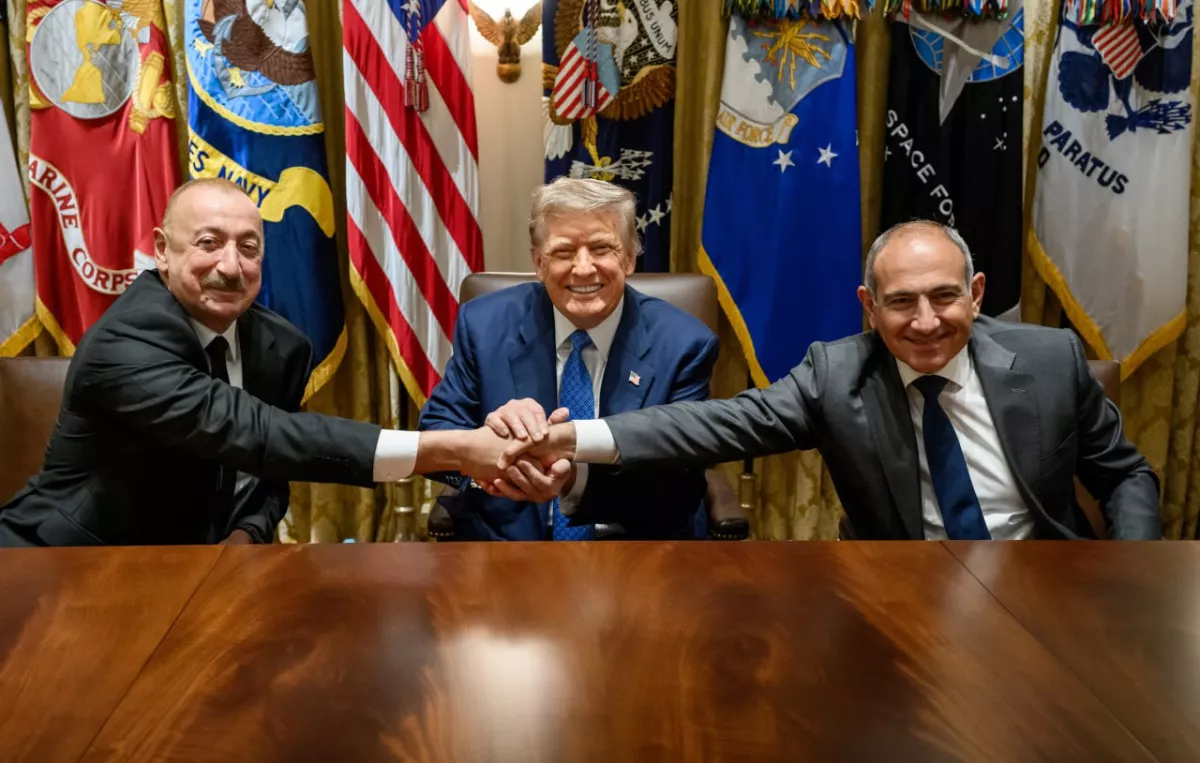Potential “Crossroads” and the real “Trump Route” The EU is setting the stage
In the South Caucasus, the lines of future roads are being drawn. At first glance, it all looks like dry engineering—maps, project plans. But in reality, this is political geometry, where every direction, every turn is determined by decisions that affect far more than just the laying of new asphalt. That is why it is important to examine what is happening objectively and without emotion—which is what we will attempt to do.
In regional logistics, what matters is not attractive slides or ambitious names, but what can actually function in practice. Here, an interesting disparity emerges: the European Union intends to allocate hundreds of millions of euros to the “Crossroads of Peace” in Armenia—an initiative that, for several years now (more precisely, since October 2023, when Pashinyan officially announced the project), has remained a paper scheme, lacking infrastructure and international guarantees. Meanwhile, concrete agreements have been reached in Washington on the “Trump Route”—a real, coordinated, and strategically planned project that will benefit the entire South Caucasus. It is this route that forms the backbone of future regional logistics. This is also confirmed by an interview with Armenian Deputy Prime Minister Mher Grigoryan on Radio Free Europe, in which he stated that the “Trump Route” will encompass all types of communications: energy, road, and rail.
It hardly needs saying that until the foundation is laid, any parallel projects are merely architecture without support. Nevertheless, Brussels is expected to allocate €270 million for the development of the “Crossroads of Peace”—an initiative whose significance outside the context of the main corridor is extremely limited. You can build new stretches within Armenia, resurface roads, and update signs all you want, but without an operational corridor from mainland Azerbaijan to Nakhchivan, all of this remains internal improvements, nothing more.
Logistics is not just asphalt—it also involves passage rights, standardisation, cargo insurance, and guarantees of uninterrupted operation. These parameters either exist or they don’t. If they don’t, movement remains local and cannot function as transit.
The agreements reached in Washington precisely fill this gap. They establish the political framework—freedom of passage, predictability. Under such conditions, the corridor ceases to be a subject of political fluctuations and becomes a managed mechanism, understandable to all. This is real infrastructure—not something on a map, but embedded in a system of decisions.

From this, a key question arises regarding the European approach. By supporting an initiative that lacks a foundation in the main connection, Brussels is effectively shifting the focus from cause to effect. This creates the impression of progress, even though the crucial point remains closed. In regional logistics, there are no minor details: first comes a corridor with international status, and then branches are added to it. Violating this sequence makes it impossible to create a coherent system.
Azerbaijan, for its part, does not object to the development of the road network within Armenia. As the saying goes, “by all means”—this is purely an internal matter for a neighbouring state. But the value of such investments only emerges when they are integrated into the region’s overall transport framework, especially if the project is being loudly promoted as international. Otherwise, it remains a set of isolated routes, each of which, paradoxically, leads nowhere. If Europe is genuinely committed to building a sustainable communications infrastructure, its primary interest should be in ensuring that the main artery—the one setting the rhythm for the entire regional economy—actually functions.
The economic logic is simple. Once the “Trump Route” becomes operational, adjacent areas in Armenia will revive, creating transit flows, service zones, warehouses, and maintenance facilities.

Abandoned railway station in southern Armenia
Any road connected to an operational corridor gains a developmental boost; any road connected only to a theoretical route gains nothing but hopes. This is not politics—it’s arithmetic.
The debate, therefore, is not about names or whose project sounds louder. The Washington agreements have set the foundation. European initiatives can become a useful complement only once the main route is implemented. Supporting what does not yet exist is not acceleration—it is distraction. And any attempt to shift attention to alternative routes before the key corridor is launched will be perceived in Baku as a deviation from the logic of the process. First, the supporting structure is built; then the communications; and only after that—the façade. Baku’s position on this matter is entirely consistent: the “Trump Route” is not part of the mosaic—it is its centre.








